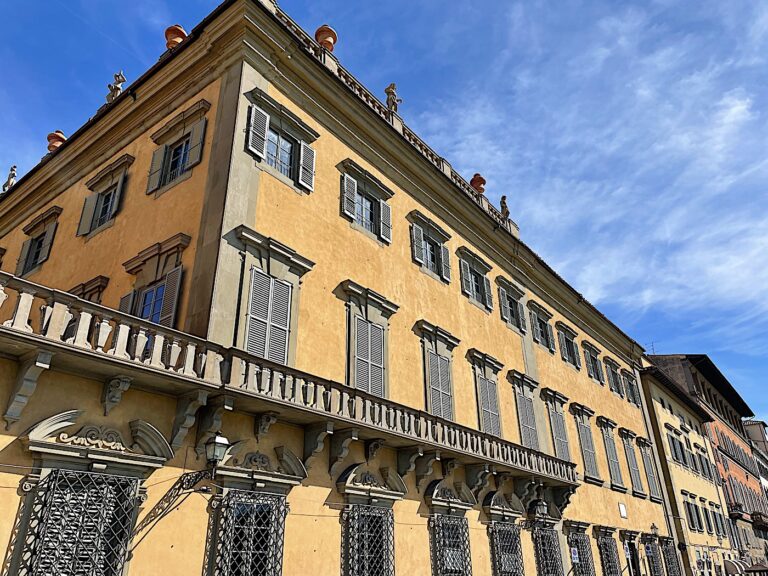
Age
1656-(1710-1737)
Designers
Alfonso Parigi il Giovane, Ferdinando Tacca, Pierfrancesco Silvani, Antonio Maria Ferri
Palazzo Corsini, also known as Palazzo al Parione, is one of the most luxurious private buildings in Florence and is located on the homonymous lungarno. The palace, in the panorama of traditional Florentine architecture, has been an absolute novelty, being in the Baroque style. In the seventeenth century the Corsini family represented one of the richest families in the city; the social and financial rise of this family began already in the fourteenth century and was crowned in 1730 when Lorenzo Corsini became Pope Clement XII. This building, which represents the main palace of the family, is located in an area where there already were other buildings inherited or purchased by the Corsini family. Bartolomeo Corsini began the construction of the palace in 1656; the works were carried out under the direction of the architect Alfonso Parigi il Giovane and later by Ferdinando Tacca and Pierfrancesco Silvani. To this latter it is attributed the present “U” shape and probably also the helical staircase (this could also be attributed to Gherardo Silvani, father of Piefrancesco). In 1685, at the death of Pierfrancesco Silvani, the works passed under the direction of Antonio Maria Ferri, to whom many of the today parts of the palace are due: the three bodies of the building developed around a central courtyard, the monumental staircase and the façade on the lungarno. The completion of the works is reported to the first decades of 1700, although not all of the project had been carried out. The building consists of three different volumes with the right wing double size compared to the left wing (the original project provided for further development of the building towards Piazza Goldoni). From the portal, surmounted by the coat of arms of the Corsini family and flanked by columns, you access the courtyard. On the entire façade at the height of the main floor, there is a view with a balustrade; beyond this balustrade, you can see the central body of the building set back from the side parts. The top floor of the building, typically eighteenth-century, is characterized by terraces decorated with statues and Terracotta vases.
The façades of Palazzo Corsini are entirely plastered, while all the decorative parts, such as the coat of arms of the Corsini family, the balustrades of the terraces, the statues, the tympanums and window sills are in Pietra Serena Sandstone; the crocks above the upper balustrades are in Terracotta.

